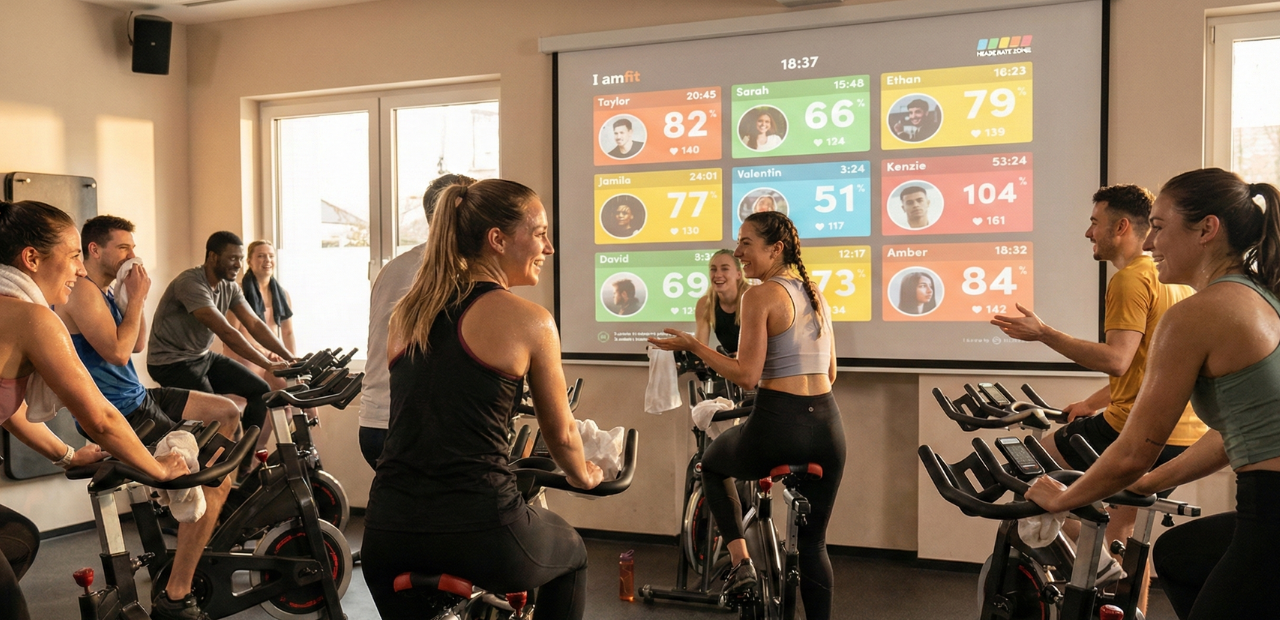You don’t have to be Zuckerberg to know that a blending of the virtual and physical worlds is where the future of commercialization lies. Nowhere is that more pronounced than in the fitness space, where an approach driven by omnichannel customer engagement is making waves across the industry.
Like tight hamstrings after a long run, fitness and technology are irreparably linked. In fact, the Les Mills 2021 Global Fitness Report found that 80% of gym members now want digital workout options that are fully integrated into their fitness plans. Not to mention the fact that those with a hybrid fitness program involving digital workout options train 22% more than those who only work out in a physical club space.
This new model is also known as omnichannel fitness: a process that has proven tantamount to improving client engagement for gyms, clubs, and studios; it will continue to be a crucial means of delivering services in the new landscape of our industry post-pandemic.
Here, we break down what omnichannel fitness means exactly, plus some of the ways you can make the most out of a hybrid fitness program.
Why Do I Need Omnichannel Customer Engagement?
Shifting to an omnichannel approach means going beyond the four walls of your facility and providing a complete ecosystem of options for your clients in order to meet their diverse needs and expectations.
Put simply, omnichannel customer engagement is a way of integrating all of your on and offline services into a format that is highly valuable to your clients, drives revenue for your business, and reduces churn by keeping members loyal and engaged long-term.
The promise of what optimizing on this might mean is clear — adopting a hybrid model is key to retaining and engaging members by helping them stay fit and healthy long-term. Fitness businesses that have already begun adopting a hybrid model — one that blends the fitness offerings of a physical studio with those orchestrated online through a website and app like this one — are way ahead of the game.
How Can I Adopt a Hybrid Fitness Program for My Clients?
With more hybrid fitness options to choose from, developing your unique approach to omnichannel fitness is now easier than ever. We’ve lined up four of the most popular and effective ways business owners are utilizing omnichannel models of fitness for their businesses.
1.Video Workouts
Video workouts have proven highly popular throughout the pandemic and will continue to be a sure-fire favorite among fitness consumers in the years to come. For you, this is great news. Video workouts provide you with the opportunity to optimize the experience you provide to your clients making your hybrid fitness program a high-value addition to your services.
By creating and uploading your own video workouts to your personalized club app, you can help your clients stay on track with their training even when they are nowhere near your facility.
If clients can access your fitness classes through an app on their phone or by casting your instructors to the TV set in their living room via Apple TV or Chromecast, you can boost engagement and forge a strong sense of community between your clients who are all participating in virtual workouts, despite any distances or access issues.
2. Livestream Your Workouts
To make tuning into your businesses’ video workouts as easy and interactive as possible, consider making livestreaming a part of your omnichannel model of fitness. You can add livestreamed classes or workout video links to your regular booking schedule through your personalized branded app.
Alternatively, you can livestream the odd promotional class on social media. While in the long run, this is not the best way to drive revenue for your business, it can be an effective way to show prospective clients what they can expect from you and the classes you have to offer.
By running the occasional Instagram live class or Facebook live session, you can drive new clients to your business and encourage clients you already have to engage with your business outside your facility, in online spaces. This helps develop social proof for your business. It is a marketing tactic that works by fostering a community feeling and a strong sense that, due to its popularity with others, yours is a business worth signing up to.
3. Incorporate wearable devices
Today, it is estimated that there are over 75 million dedicated smartwatch users in the US alone. This is a number that is set to keep on growing, as a holistic approach to health becomes the most popular way in which consumers pursue their fitness goals.
By tracking not just their workouts but also their calories, steps, VO2 max, sleep, and all kinds of personal biometric data, consumers, and specifically your clients, can optimize their health and, as such, better reach the fitness goals that they hope to pursue with your gym, club or studio.
By jumping aboard this technological trend and incorporating wearable devices into your offering, you can not only create a new line of omnichannel customer engagement, but you can also drive profit by introducing a new revenue stream.
For example, by integrating a heart rate tracking function into both your app and your fitness classes, you can create a new experience for your clients and supplement your income by reselling wearable fitness devices.
4. Utilize Exergaming
Exergaming is technology-driven fitness at its most fun. It’s an interactive method of fitness that incorporates a physical workout with the excitement of a video game. As featured in Facebook’s new Meta promotional video, exergaming is set to prove hugely influential in the way future consumers stay fit. But this does not have to be a threat to your business. Rather, it could work as an effective add-on when incorporated into your hybrid fitness program.
One example might be encouraging your clients to start using Xbox games like Olympic Games or Just Dance, which get them up and moving, or the Ring Fit Adventure or Fitness Boxing games on PlayStation. By combining hardware motion sensors with fun virtual activities, your clients have more reason to stay fit.
VR — or virtual reality – headsets are growing ever more popular, and have also infiltrated the world of fitness. The Oculus Quest 2 is an affordable range of VR headset that offers dancing games and fitness games like Supernatural that have users stand in beautiful landscapes as they squat, lunge, and smash orbs to an awesome soundtrack.
Another way to gamify the experience of your hybrid model is to encourage your clients to take part in fitness challenges . We have found that, even with our own Virtuagym staff, this is an effective way to keep people on track with their workout goals, introduce a sense of competition, and create a feeling of connection with others.
Implementing just some of these hybrid models will be crucial to adapting your business for the demands of the future. When we conducted a survey of our clients in 2020 to see how they were coping with the challenges of the pandemic, results showed overwhelmingly that businesses that quickly adapted their offerings into the digital domain fared better than those that did not. For more tips on how to go hybrid, keep your eye on the Virtuagym blog .




